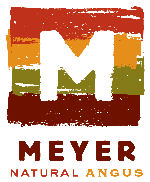Feeding MSE direct-fed
microbials to finishing cattle
decreases
the fecal
shedding of Escherichia coli O157:H7
M. Jacob1, K.
Lechtenberg2, L. L. Burnham3, D. Haverkamp3,
and T. G. Nagaraja1
1Kansas
State University, Dept. of Diagnostic Medicine/Pathobiology, Manhattan, KS
2Midwest
Veterinary Services,
Oakland, NE
3Natur s Way, Inc.,
Horton,
KS
Escherichia coli
O157:H7, a food borne pathogen, continues to be a major public
health concern. Cattle are the primary reservoir; the organisms reside in
the hindgut and once shed can contaminate food and water. Intervention
strategies at harvest reduce the risk of the pathogen entering the food
chain, however, pre-harvest intervention strategies reduce the E. coli
O157:H7 burden prior to cattle entering the processing plant.
Direct-fed microbials (DFM) appear to be a promising pre-harvest
intervention strategy. In this study, we evaluated the effect of a
commercially available DFM product on E.
coli
O157:H7
prevalence in feedlot cattle fed for fifteen days prior to harvest. The DFM
product,
MSE Microbial Concentrate
(Natur s
Way, Inc.), contains Lactobacillus acidophilis, L. casei,
Saccharomyces cerevisiae, Enterococcus faecium, and a fungal
extract. Ninety-six cattle, previously screened and shown to be fecal
positive for E.
coli
O157:H7, were
randomly assigned to one of sixteen pens (6 cattle/pen). Eight pens of
cattle were fed a corn grain-based (control) diet while cattle in eight
treatment pens were given the
control
diet plus a daily top-dressed dose (0.5 g/Kg of feed) of DFM. Fecal
grab samples were obtained from each animal on d 0, 7, and 15 and cultured
for E. coli O157:H7. In addition, a semi-quantification
technique was used to determine the number of super shedders on d 15. On d
0, both control and DFM groups had an E. coli O157:H7 prevalence of
22.9%. Across sampling days, the average fecal prevalence of E. coli
O157:H7 in control cattle (22.2%) was higher (P < 0.05) than
cattle fed the DFM (10.3%). The prevalence
of E. coli O157:H7 was reduced
by 54% and 80% on d 7 and 14, respectively, in the DFM group compared to the
control. On d 15, 3 cattle in the control group and none in the DFM
treatment group were super shedders. The results indicate that the MSE DFM
product may be a useful pre-harvest intervention tool to reduce
E. coli O157:H7 prevalence in finishing cattle.



